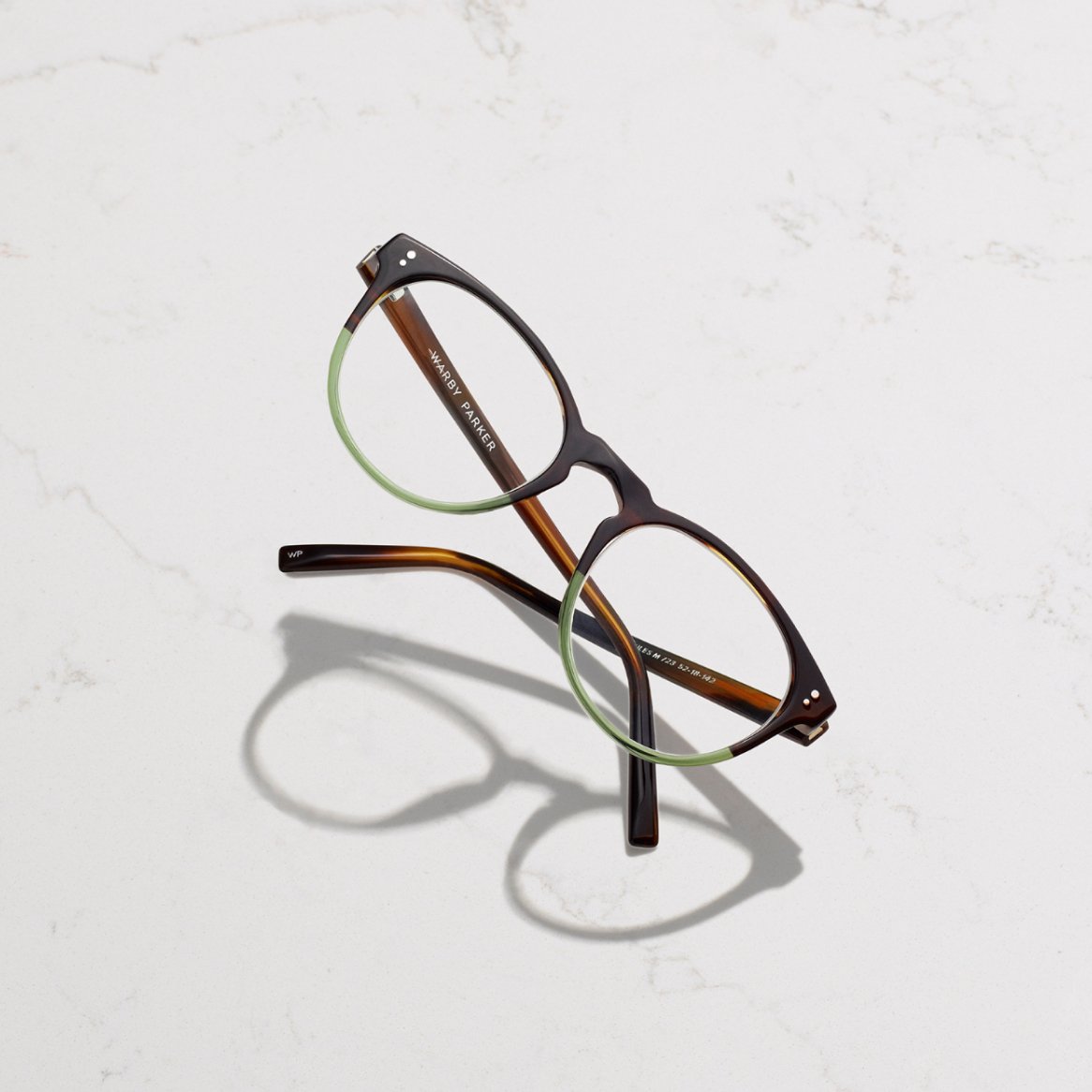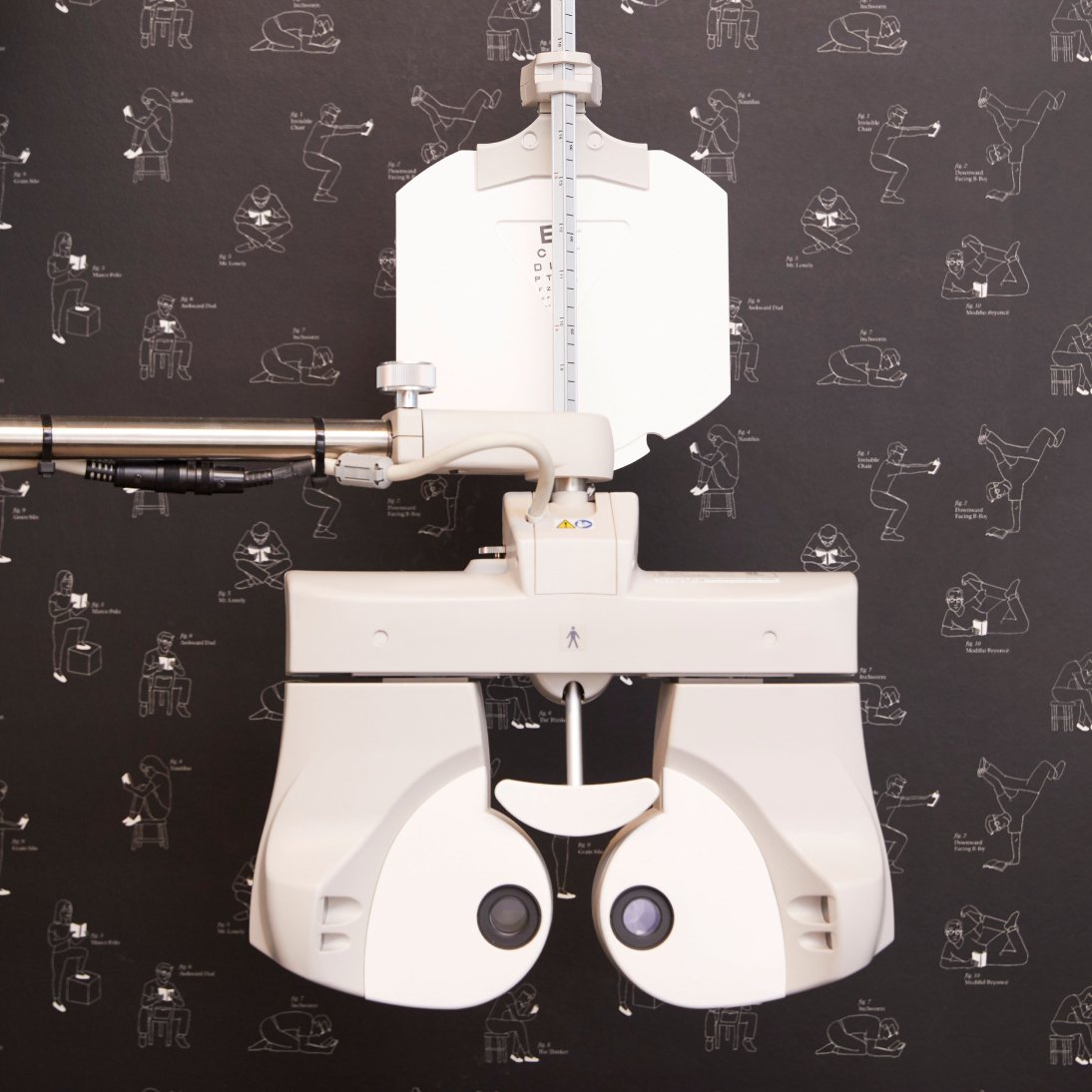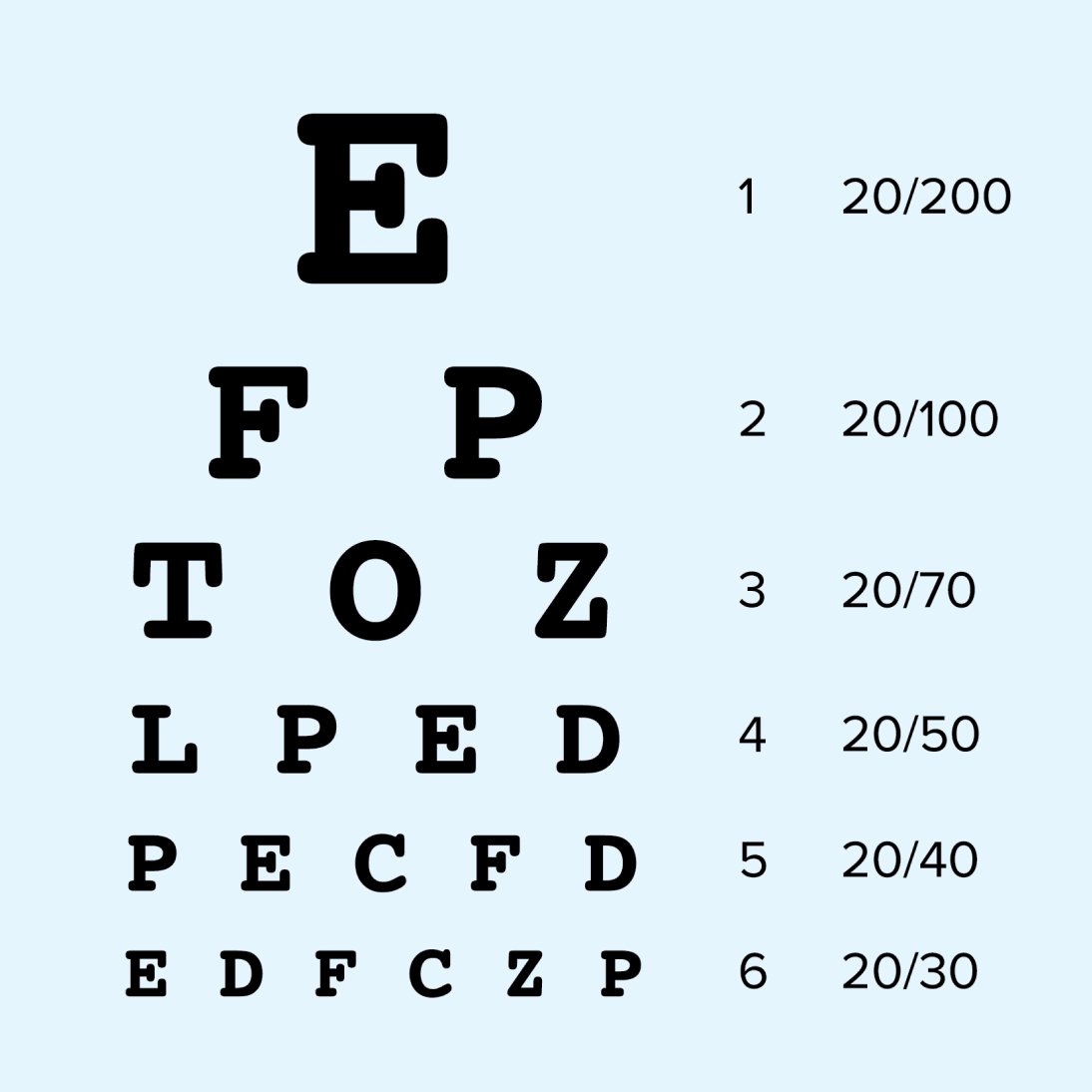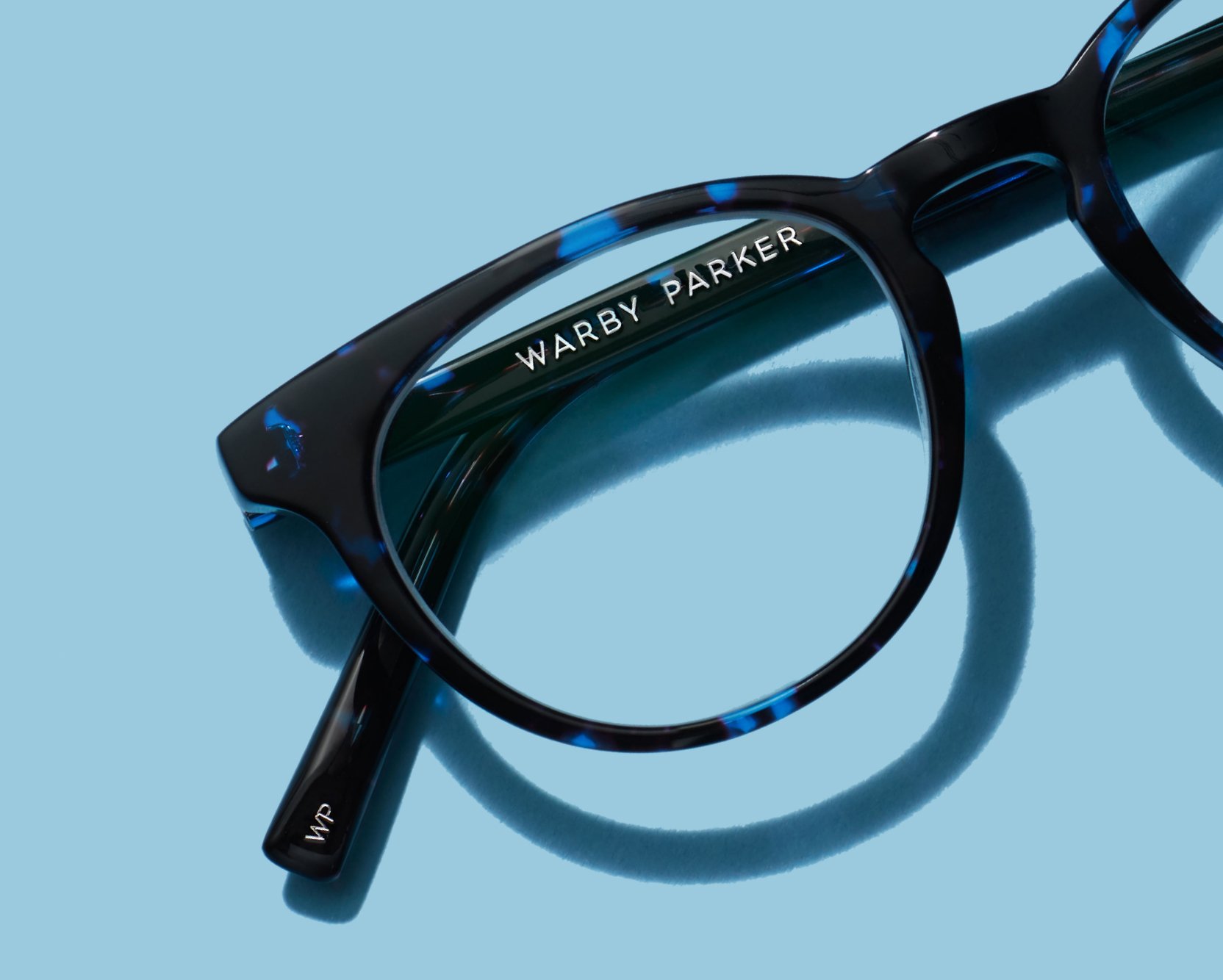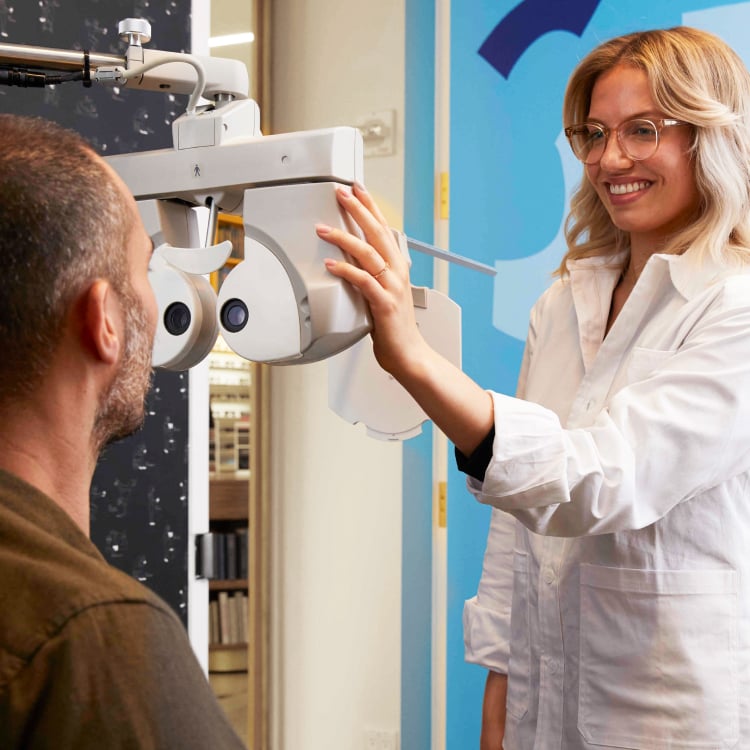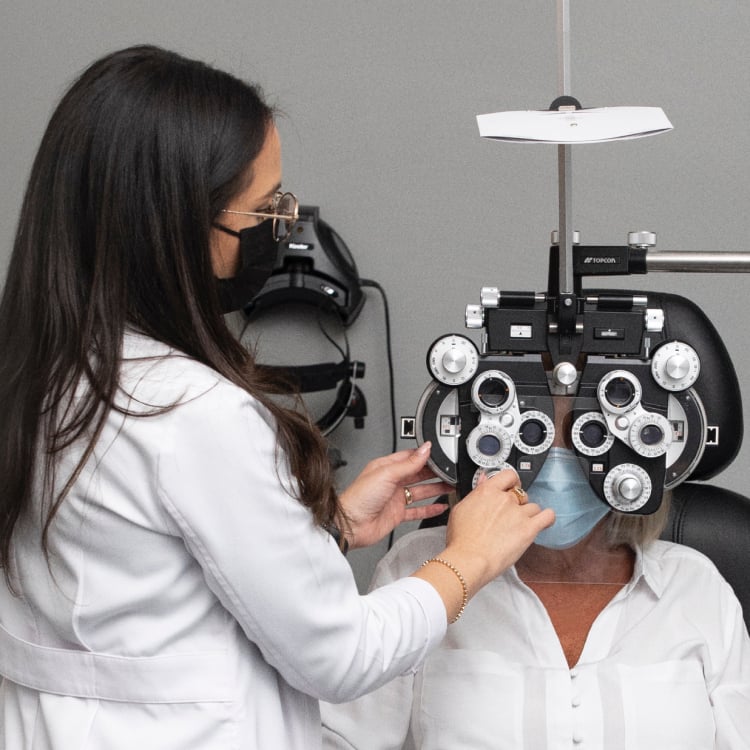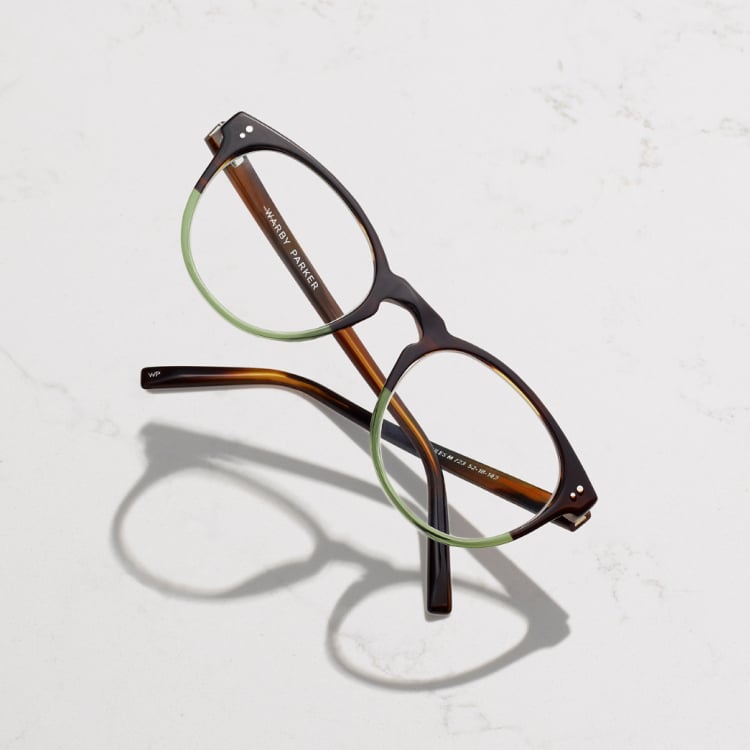“20/40 vision” is a measurement of visual acuity, and while this vision test score may represent a less-than-perfect result, that doesn’t mean you should consider it “bad.”
Most people have heard of 20/20 vision, and some might know that 20/40 vision would be considered less sharp than that—but far fewer people actually understand what these vision measurements truly mean. It’s our hope that this guide will help you see this topic a little more clearly. (See what we did there?)
The Meaning Behind “20/40 Vision”
“20/40” is a measurement of your visual acuity (the sharpness of your vision), which is determined during the refraction portion of an eye exam.
During a refraction test, you read letters off a Snellen chart—it has rows of letters decreasing in size with the smallest letters at the bottom of the chart. You do this without any vision correction (glasses or contacts). The eye doctor has you read the row with the smallest letters you can see clearly while seated 20 feet away. Sound familiar?
The numbers in your visual acuity measurement have to do with distance. It might be easiest to explain if you imagine the Snellen chart: When you have a Snellen test score of 20/40, that means you’d see the chart as clearly at 20 feet away as someone with “normal” vision would see it from 40 feet away.
In other words, the top number is the distance you are from the chart—the “20” represents 20 feet (sometimes mirrors are used to create this distance if the room size doesn’t allow for it).
The eye doctor determines the smallest set of letters you can read clearly, and the bottom number of your score (40, in this case) represents the distance at which someone with “normal” vision would be able to clearly read the letters in that row.
20/20 vs. 20/40 Vision
If you’re wondering whether 20/40 is better than 20/20, the answer is no. 20/20 is considered “normal,” and 20/40 vision would be less than that. Generally speaking, the larger the bottom number of a visual acuity ratio, the less sharp your vision will be.
Let’s imagine that Snellen chart again. To put the description from earlier another way: For a person with 20/40 vision acuity, the smallest row of letters they can clearly make out when seated 20 feet away from the chart could be read by someone else with “normal” vision when they’re a full 40 feet away from the chart.
Is 20/40 Vision Bad?
Although 20/40 vision is less acute than average, that doesn’t mean you should think of it as “bad.” Someone with 20/40 vision just wouldn’t be able to see clearly at quite as far of a distance as someone with “normal” vision.
We keep putting “normal” in quotes because “normal” is pretty subjective, don’t you think? 20/20 vision is referred to as “average” or “normal” because it’s a reliable benchmark for visual acuity, but it doesn’t mean that most people actually have 20/20 vision. (Actually, it’s estimated that about half of the adults in the U.S. have “some type of clinically important refractive error.”)
Is 20/40 Nearsighted or Farsighted?
A person with 20/40 vision acuity could be considered nearsighted, but that could be misleading. For instance, higher farsighted prescriptions could also cause someone to be 20/40, and certain eye conditions could also cause 20/40 vision.
Does Someone With 20/40 Vision Need Glasses?
Some people with 20/40 vision choose not to wear glasses or contacts, but prescription lenses will almost certainly help them if they want to improve their visual acuity. Maybe we’re a little biased, but we get pretty pumped about picking out new eyewear!
Can You Drive With 20/40 Vision?
According to the AMA Journal of Ethics, all but three states have set 20/40 as the minimum best corrected visual acuity necessary to get an unrestricted driver’s license. That means you can legally drive a car with 20/40 vision without corrective eyewear, but if your visual acuity was even a little less clear, you’d need to wear glasses or contacts.
You can check with your local Department of Motor Vehicles if you’re unsure of your state’s requirements. As for us, we recommend wearing prescription eyewear if you have 20/40 vision and plan on driving—better safe than sorry!
What Does 20/40 Vision Look Like?
With 20/40 vision, distant objects or text might be harder to see clearly (meaning they might look a little blurry) compared to someone with 20/20 vision.
You Can Enhance Your 20/40 Vision With New Eyewear
Just remember: 20/40 vision is not bad! It just means you can benefit from corrective lenses. If you’d like to see distant objects and text a little more sharply, it’s nothing some new glasses or contacts can’t fix. Book an appointment with one of our top-notch optometrists if it’s time to recheck those peepers.

